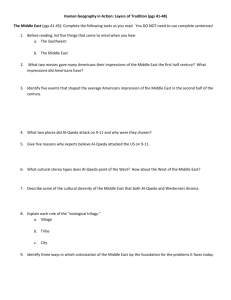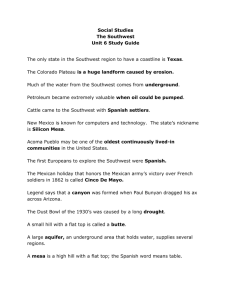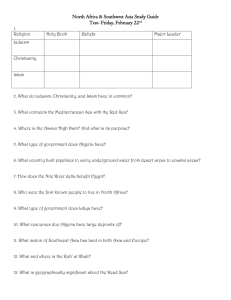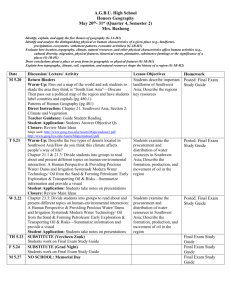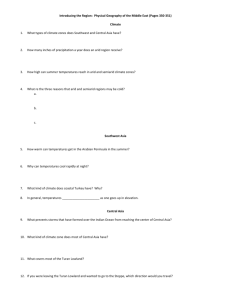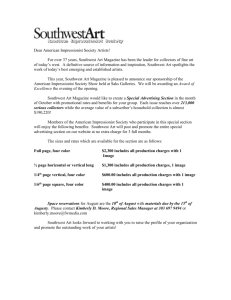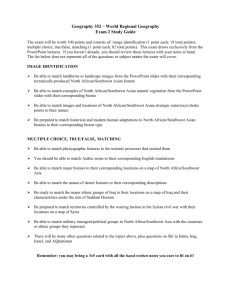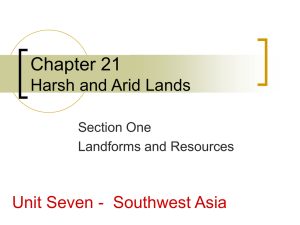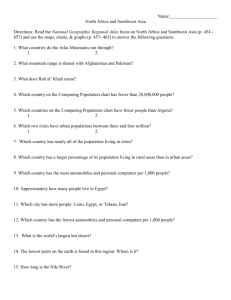Cultural Geography Study Guide: Regions & Landscapes
advertisement
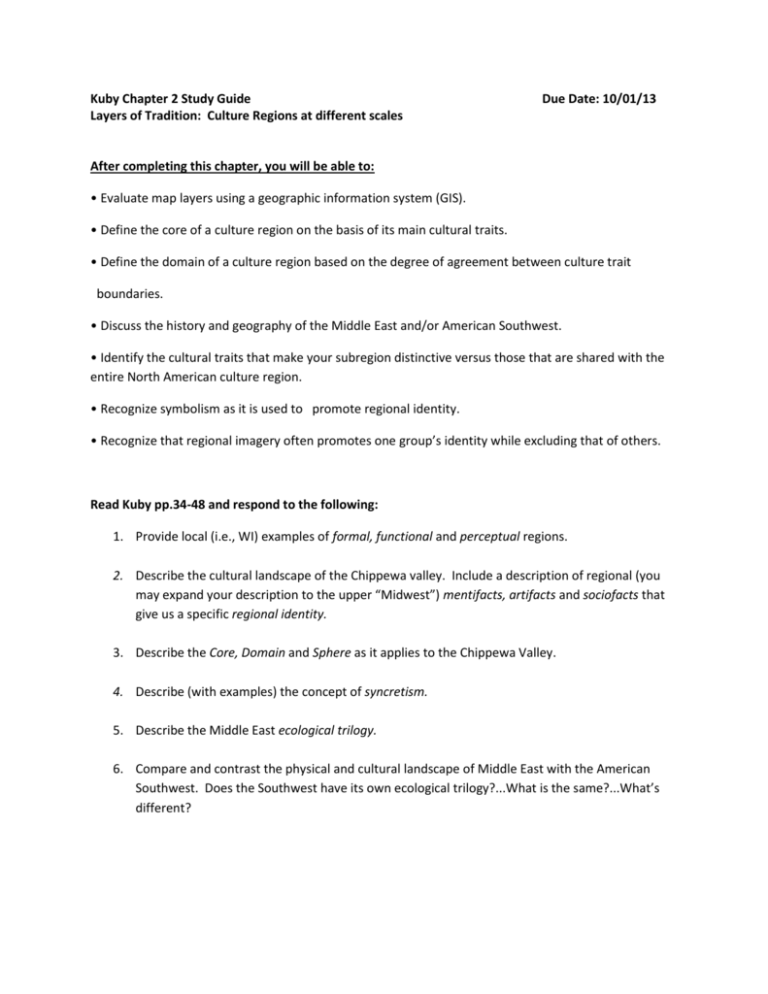
Kuby Chapter 2 Study Guide Layers of Tradition: Culture Regions at different scales Due Date: 10/01/13 After completing this chapter, you will be able to: • Evaluate map layers using a geographic information system (GIS). • Define the core of a culture region on the basis of its main cultural traits. • Define the domain of a culture region based on the degree of agreement between culture trait boundaries. • Discuss the history and geography of the Middle East and/or American Southwest. • Identify the cultural traits that make your subregion distinctive versus those that are shared with the entire North American culture region. • Recognize symbolism as it is used to promote regional identity. • Recognize that regional imagery often promotes one group’s identity while excluding that of others. Read Kuby pp.34-48 and respond to the following: 1. Provide local (i.e., WI) examples of formal, functional and perceptual regions. 2. Describe the cultural landscape of the Chippewa valley. Include a description of regional (you may expand your description to the upper “Midwest”) mentifacts, artifacts and sociofacts that give us a specific regional identity. 3. Describe the Core, Domain and Sphere as it applies to the Chippewa Valley. 4. Describe (with examples) the concept of syncretism. 5. Describe the Middle East ecological trilogy. 6. Compare and contrast the physical and cultural landscape of Middle East with the American Southwest. Does the Southwest have its own ecological trilogy?...What is the same?...What’s different?

